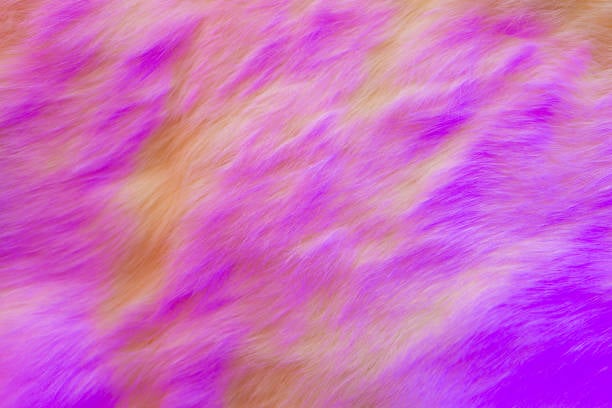Table of Contents

Faux Fur vs. Fake Fur: Understanding the Difference
Introduction: Exploring the Distinctions between Faux Fur and Fake Fur
Faux fur and fake fur are terms that are often used interchangeably, but there are important distinctions between the two. As consumers become more conscious about the impact of their choices on animal welfare and the environment, it is crucial to understand the difference between these alternatives to real fur. In this article, we will delve into the characteristics, manufacturing processes, and ethical aspects of both faux fur and fake fur, allowing you to make informed decisions when it comes to purchasing fur-like products.
1. Faux Fur: A Luxurious and Animal-Friendly Alternative
Faux fur, also known as synthetic fur or artificial fur, is a man-made material designed to imitate the appearance and texture of real animal fur. It is typically crafted from synthetic fibers such as acrylic, polyester, or modacrylic. Faux fur offers a cruelty-free alternative to traditional fur products, as no animals are harmed in its production. This makes it a popular choice among animal rights activists and individuals looking for an ethical alternative.
2. Fake Fur: A Broad Term Covering Various Materials
The term "fake fur" is a broader category that encompasses a wide range of fur-like materials. Unlike faux fur, which is specifically made from synthetic fibers, fake fur can be made from both natural and synthetic materials. Natural materials used in the production of fake fur may include cotton, hemp, or wool. The key distinction between faux fur and fake fur lies in the manufacturing process and the source of the fibers. While faux fur is entirely synthetic, fake fur can incorporate natural fibers.
3. Characteristics of Faux Fur
Faux fur is designed to closely resemble real animal fur in terms of appearance and texture. It often features a soft and plush feel, mimicking the luxuriousness of authentic fur. Faux fur can come in a variety of lengths, colors, and patterns, allowing for a wide range of design possibilities. Additionally, faux fur is often more durable and resistant to wear and tear compared to real fur, making it a practical choice for clothing and home decor items.
4. Characteristics of Fake Fur
Unlike faux fur, which is created solely from synthetic fibers, fake fur can incorporate both natural and synthetic materials. This can result in a broader range of textures and appearances for fake fur products. Depending on the materials used, fake fur can have different levels of softness, warmth, and durability. However, it's important to note that fake fur made from natural fibers may not offer the same level of cruelty-free assurance as faux fur.
5. Manufacturing Process of Faux Fur
The production of faux fur involves weaving or knitting synthetic fibers into a fabric base, which is then treated to resemble real fur. Various techniques, such as shearing, dyeing, and pattern printing, are used to achieve a realistic appearance. Faux fur can be made to imitate the fur of specific animals, such as mink or fox, or it can be created in unique designs. The manufacturing process of faux fur allows for greater control over the final product's appearance and quality.
6. Manufacturing Process of Fake Fur
The manufacturing process of fake fur is more diverse compared to faux fur. Depending on the materials used, fake fur can be produced through weaving, knitting, or felting. Natural fibers like cotton or wool can be spun or woven to create a fur-like texture, while synthetic fibers can be processed in a similar manner as faux fur. The wide variety of materials and manufacturing techniques used in producing fake fur contributes to its versatility and range of textures.
7. Environmental Impact of Faux Fur
Faux fur is often considered a more environmentally friendly choice compared to real fur. Its production does not involve the use of animal resources, reducing the demand for animal farming and trapping. Additionally, the synthetic fibers used in faux fur can be recycled, contributing to a more sustainable production cycle. However, it's important to consider the environmental impact of the chemicals used in the production of synthetic fibers and the disposal of faux fur products at the end of their lifecycle.
8. Environmental Impact of Fake Fur
The environmental impact of fake fur varies depending on the materials used. Fake fur made from natural fibers like cotton or wool may have a lower carbon footprint compared to faux fur, as these materials are biodegradable and renewable. However, the production of synthetic fake fur can contribute to pollution and resource consumption. It is essential to consider the specific materials used and the manufacturing processes employed when evaluating the environmental impact of fake fur products.
9. Ethical Considerations of Faux Fur
From an ethical standpoint, faux fur is generally seen as a more compassionate alternative to real fur. By opting for faux fur, consumers can avoid supporting the fur industry, which is often associated with animal cruelty and unethical practices. However, it's crucial to ensure that the faux fur products you purchase come from reputable sources and are not mislabeled as real fur, as this can perpetuate the demand for genuine fur.
10. Ethical Considerations of Fake Fur
The ethical considerations surrounding fake fur largely depend on the materials used in its production. Fake fur made from natural fibers can provide a more ethical choice, as it avoids the use of synthetic materials and reduces the demand for animal-based resources. However, if fake fur includes synthetic fibers or is mislabeled as real fur, it can be challenging to determine its ethical implications. As a responsible consumer, it is important to research the materials and production methods of fake fur products to make an informed decision.
